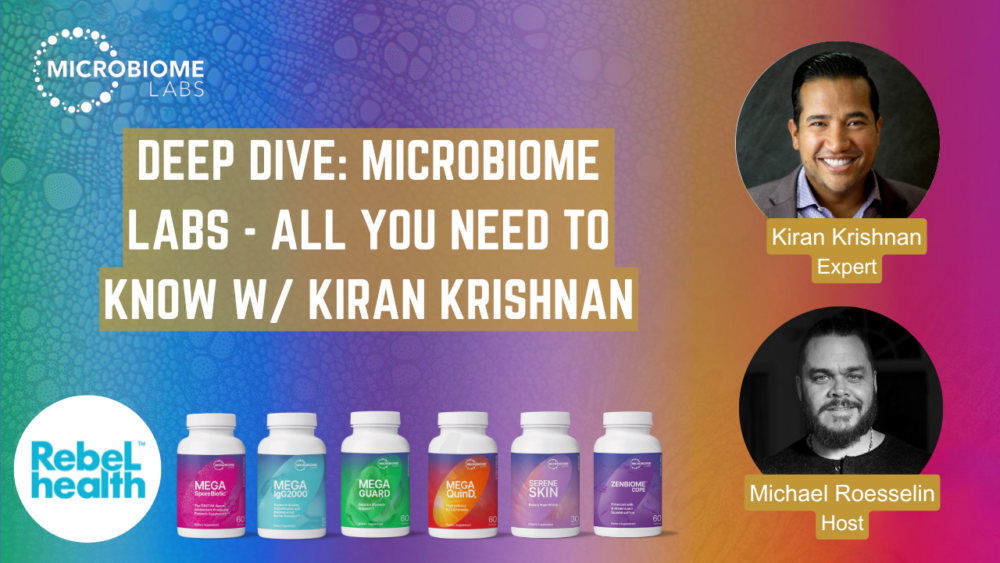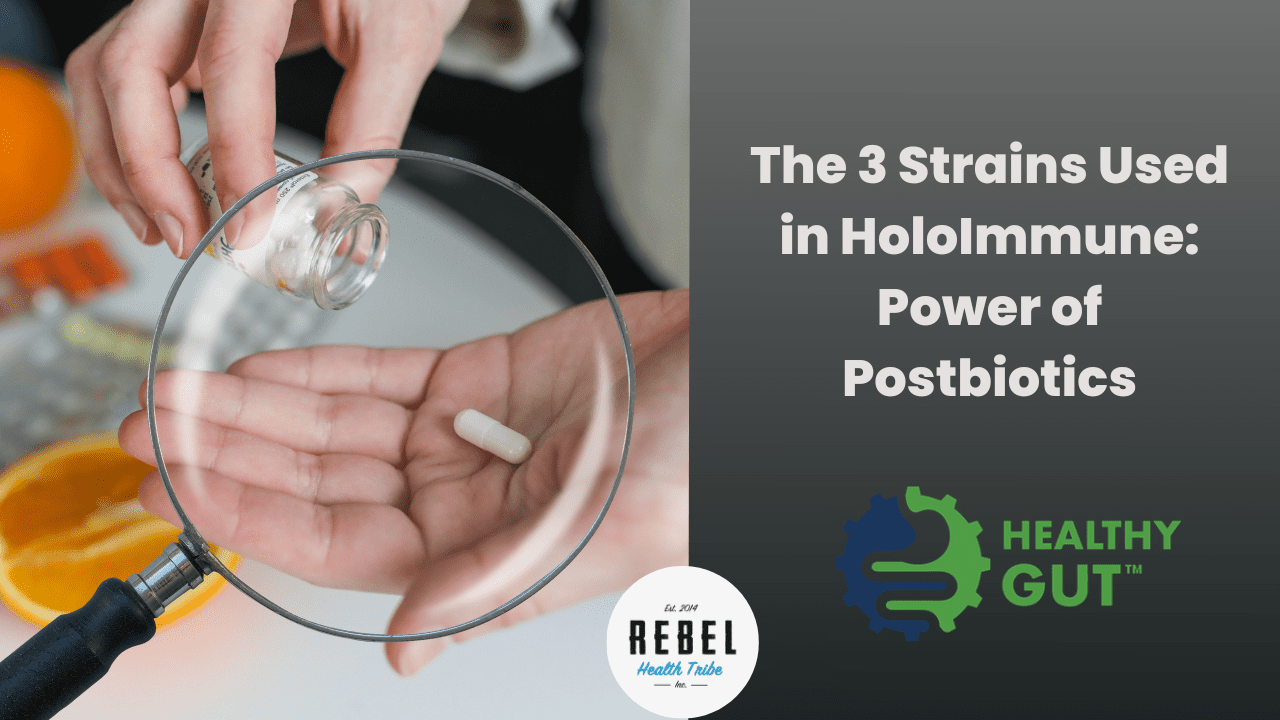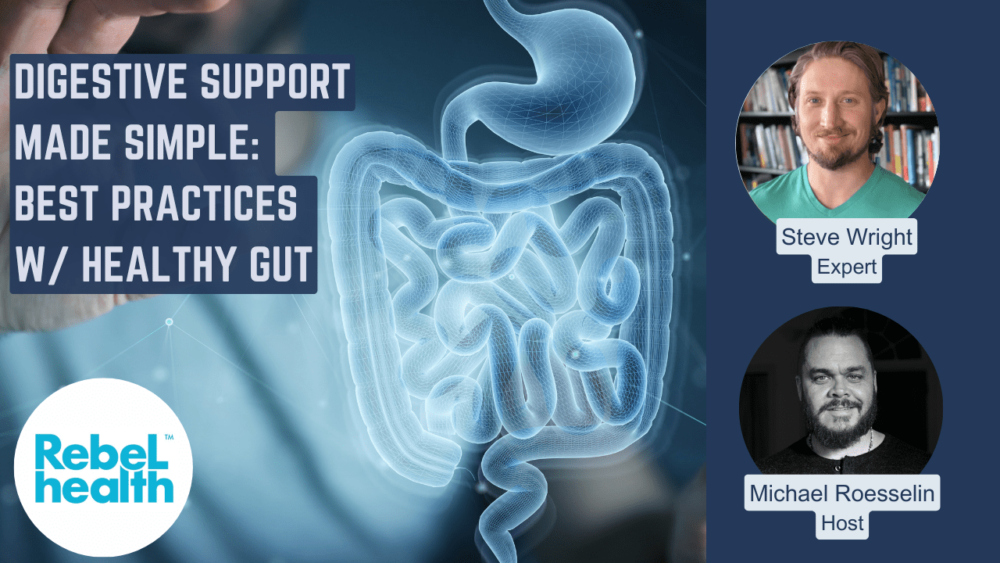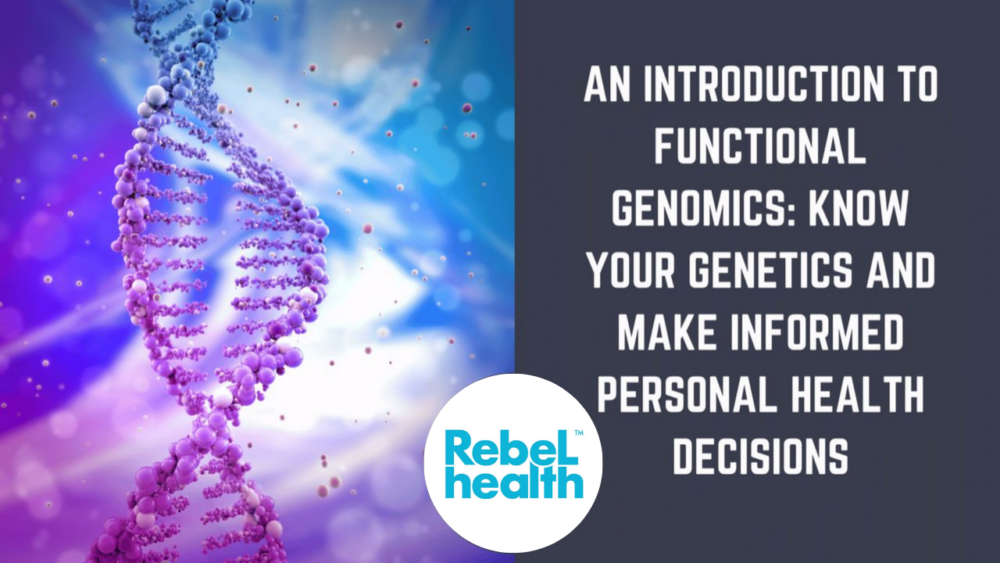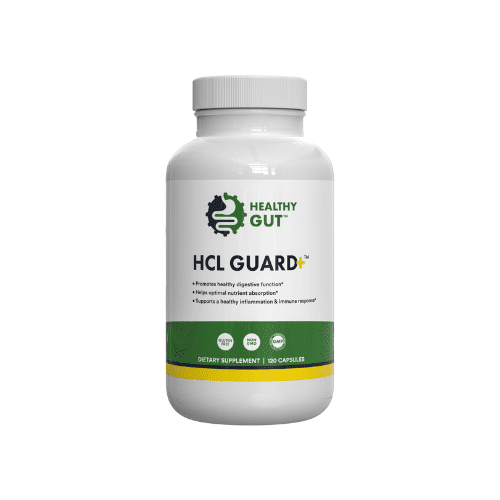[Michael Roesslein]
Hey, Dr. Nafisa, welcome to the podcast.
[Dr. Nafysa Parpia]
Thank you for having me.
[Michael Roesslein]
Just had a great chat. I almost forgot to hit record and do this podcast, which happens
sometimes when I get in interesting conversations with guests as we prepare. So let’s actually
have some of it be on camera.
And we’re gonna talk about a topic today that I think there’s rightfully growing interest in,
unfortunately, because it’s a problem that’s now affecting millions of people, both in the US and
worldwide, and that is long COVID. And there’s a lot of opinions on this. There’s a lot of people
that have been gaslit around this of, you’re fine, nothing’s wrong with you.
And then what I think is going on as well is that the symptoms of long COVID don’t match that
of like a respiratory infection that you would think. And so I think a lot of people are probably
walking around with some variation of this, and they don’t put two and two together because
when they had COVID, they had a stuffy nose and they had a cough and they’ve got a fever and
they maybe had a little like joint pain or something. And then months later, they’re dealing with
brain fog or depression or anxiety or heart arrhythmias, right?
So am I close to the mark here?
[Dr. Nafysa Parpia]
Absolutely. What I’d say is that there’s two categories of people regarding onset of symptoms.
So we’ve got people who had the acute infection or some people right after they got
vaccinated, they’ve gone from being pretty healthy, pretty functional to suddenly they’re really,
really sick.
Every system of their body is hijacked. So that’s the first category. And then the second
category is the people you just mentioned who they had the acute infection or they had the
vaccine and it’s been a year or it’s been many years and there’s this slow insidious creep of
chronic illness that’s come up and now they’re ill.
But the interesting thing is whether it’s been, it was a right off the bat reaction or a slow creep
into illness, the symptoms are looking pretty similar in people.
[Michael Roesslein]
And what do those look like for the long version?
[Dr. Nafysa Parpia]
Yeah, well, for the long version and the short version, they’re pretty similar. I think the most
important thing to understand is that every single system is hijacked. And in medicine today,
we want, or I’d say the medical community and even patients want an illness to fit into a nice
tidy box, right?
Like one diagnostic, one system affected, one symptom, one treatment, and it’s the same for
each person. But when it comes to diagnoses like long COVID, MECFS, autoimmune conditions,
fibromyalgia, chronic Lyme, these patients have symptoms in multiple systems of the body. And
the way it presents is gonna be actually quite different for each person.
But I’d say that every system is affected. So we’ve got the neurological system. These people
get POTS, meaning they go from sitting to standing and suddenly they get tachycardia, they get
dizzy, or they have issues with stomach emptying or other issues with digestion, or they can’t
take deep breaths or they just get dizzy randomly.
So that’s the neurological system. They also have issues in the GI system. I’m seeing people
now more than ever who have like irritable bowel disease.
I’m seeing Crohn’s, colitis in a way that I didn’t before, or they just have more diarrhea, gas,
bloating, or constipation, issues like that they didn’t have before. I’m seeing symptoms in the
ears, nose, and throat. So actually a lot more dental issues.
I’m seeing people with more cavitations than they had before. That’s more root canals or areas
where wisdom teeth were pulled, infected. People with chronic sinusitis, people with pressure
and pain in their eyes.
They’ve got hormonal issues, issues in the musculoskeletal system, pain in the muscles, joints,
the bones. So literally every system of the body is affected and the symptoms are random. Like
one day it could be a set of symptoms in the ears, nose, and throat, and the gut.
Another day in the nervous system, and it rotates. And the presentation is different for each
person, but the commonality is that every system is affected.
[Michael Roesslein]
It’s wild, and so many of the things you mentioned seem like there’s something that was maybe
there before to a lesser degree, or dormant, or in remission, or I used to have that problem, or I
used to have symptoms, and then it kind of, I don’t know, I don’t know what the right words to
use would be, that it either reactivates those things, or it changes the body’s response to those
things to where it’s no longer keeping it at bay, or both.
I don’t know if it fires up the infection or the thing to where it’s like, all right, let’s go, or it
removes your own ability to keep it at bay. Does that make sense?
[Dr. Nafysa Parpia]
Yeah, it totally makes sense, and in fact, both those things are happening because the spike
protein, the proteins from the virus itself are so highly inflammatory, so many, it can cause
multiple things to happen in the immune system, which is quite complex in what we can go
through. The multitude of reasons this happens, but one of the things that can happen is there
can be such a flare in our immune system, our response in our immune system can become so
flared. In fact, we get into the state of chronic inflammation.
Our immune system creates chronic inflammatory cytokines. That then can wake up dormant
infections, so infections in the herpes family, like Epstein-Barr virus, cytomegalovirus, HHV-6,
HSV-1 or 2, for example. We see people with mycoplasma or chlamydia pneumoniae that was
dormant before.
Now it’s active. We also see people who have chronic Lyme and tick-borne diseases, Lyme,
Bartonella, Babesia, for example, those infections that the immune system could keep at bay,
all of a sudden, they’ve been woken up due to COVID itself and due to the response from our
immune system, which is this prolonged state of inflammation. So because of that, we can have
infections, right?
The ones that were asleep, so to speak, now fully active, but we can also get such immune
dysregulation that it leaves our bodies more permissive to other common infections or other
common microbes, which we’re exposed to, and I’d say…
[Michael Roesslein]
I was muted. That’s wild. And it all kind of stems from the spike protein causing the
inflammatory response that’s switching up the signaling.
And I’ve interviewed Dr. Jessica Drummond about a similar topic who has her own personal
four or five, four years now experience with long COVID and has been through the gambit of
personal experience and research. And she suggested that we start also looking at it or treating
it as you would treat an injury, like either a brain injury or like an injury to the cardiovascular
system as much as an infection or an immune dysregulated state that so many of the
symptoms are similar to brain injuries or neurodegenerative disease, like something that has to
do with concussions or brain injuries or also like cardiac events, like post heart attack, post
stroke type of symptoms, but they didn’t have a heart attack, but they’re showing the same
kind of damage to the cardiovascular system. And she said like the correct terminology for a lot
of the symptoms to use would be injury instead of like infection, because you might not still be
actively infected.
And do we know, one, what do you think about that? And two, do we know like how or why that
happens? Like how a virus and the response of the body to that virus could result in a situation
that appears very similar to that of an injury, like a brain injury or a cardiovascular event?
[Dr. Nafysa Parpia]
Yeah, absolutely. So I’d say prior to the pandemic, the medical community and patients, and it
still happens a lot, I’d say too, thought that an infection could do one of two things, right? They
thought that infection could come, make you sick, like give you a cold or give you diarrhea or
something, right, the infection could come, it could go, and then your life goes back to normal,
right?
You’re not sick anymore. That could happen with the microbe or a microbe could come and go
and kill the person. But there are a couple other things that happen that doctors like us who
have been working with people with chronic Lyme and chronic fatigue syndrome for many,
many years now, we know that it’s not those two choices, right?
That a bug can come and cause such dysregulation in the immune system, so much
inflammation in the immune system, and then the bug goes, but it leaves that person open to
multiple different systemic illnesses, okay? So there’s that possibility. The second possibility is
an infection can come acutely and then go, but hang around at low levels, chronically
replicating, growing, festering, and that then leads to other illnesses as well.
So this is what we’ve seen with Lyme. It’s what we’ve seen in patients who have chronic fatigue
syndrome, and now we’re seeing it in patients who have long COVID. These different sites get
injured, literally, because the infection could have come and gone, but the immune system is in
such a state of dysregulation, we’re starting to create inflammatory chemicals that were
supposed to be transient.
So when we have an acute event, maybe a heart attack or an acute pneumonia, our body
creates inflammatory chemicals. We’re supposed to do that. That’s to contain the insult, but the
inflammatory response is supposed to be transient.
It’s supposed to go away. In these patients, they’re stuck in cell danger response one. They’re
stuck in an inflammatory state.
Inflammation is stuck in a loop. When that happens, we now have inflammation meets the
genes, and then we get epigenetic expression. So that’s what I would say the injury is.
It’s when the inflammatory chemicals have actually caused the genes to express, and then we
get the end product, which is damage to the tissues. And that’s why the illness also is very
personal, because we’ve got hundreds of different biochemicals acting. They’re different in
each person, acting in a coordinated way that then gets hundreds of thousands of different
genes to express, and it’s different for each person.
And I think that that’s really key over here, right?
[Michael Roesslein]
So that’s why what presents for one person can be brain fog and depression, and what
presents for another person could be POTS or anxiety or insomnia in another person. It could
be cardiovascular damage and cardiovascular events like myo, I always mess up this one,
myocarditis. And a lot of heart, I don’t know if it’s just being reported more now or if it’s actually
happening.
I haven’t seen any, because it always seems like there’s more and more like middle-aged people
now, like famous people, athletes and such, having heart attacks, having strokes. Like my
neighbor’s son just passed away from a heart attack who was quite young. And I don’t know if
that’s actually happening more.
I know I see it more, but that’s why it would be so different, right? Like that’s why it’s, and that
makes it really difficult to kind of, people like things to be simple, and they like them to be
categorized, and they like like this disease has this symptom or these symptoms, or this
problem has these symptoms, and this is how you fix it, right?
[Dr. Nafysa Parpia]
Right, right, and that’s what I meant when I was saying that medicine wants it to be one
diagnosis, one system affected, one symptom.
[Michael Roesslein]
One treatment.
[Dr. Nafysa Parpia]
One treatment, and it’s the same for everybody. However, we’ve got multiple symptoms, and
they’re rotating. Every single system of the body is affected.
There’s a different expression and different treatment for everybody.
[Michael Roesslein]
So, okay, and I’ve heard you mention something of a SARS-CoV-2 reservoir. Is that what you
mean when you’re talking about the latent virus that’s still kind of around and causing
problems, even though it might not be directly symptomatic?
[Dr. Nafysa Parpia]
You know, I think of the latent virus as a different thing, actually, but they are connected, right?
So, with regards to reservoirs, there are some people who the virus actually still hangs around
in their tissues after the acute infection. So, they get an acute infection.
It goes away, right? The initial symptoms go away as well. The cough and the runny nose and
the sore throat, all of those acute symptoms, they’re gone, and they don’t test positive on a
nasopharyngeal swab anymore.
So, they think COVID is gone. However, we have multiple tissues in our body, in multiple
systems of our body, which have the ACE2 receptor, and the virus itself enters our body
through these receptors, and it can actually stay there. And now, the person actually can have
replicating virus or the viral mRNA in these tissues of the body, and then it’s creating long
COVID.
It’s actually creating inflammation.
[Michael Roesslein]
It’s just like you’re getting exposed to it again all the time, right?
[Dr. Nafysa Parpia]
Sort of. It’s 100% that. They’re getting chronically exposed.
[Michael Roesslein]
Because it’s being replicating. But even if it’s at sub, they’re not developing the runny nose and
the cough and everything again, but there’s enough of it that it’s causing damage, that it’s
causing immune responses, that it’s causing other things to flare up, that it’s. So, okay.
Wow, this is a complex, very complex situation. So, what, I guess then, how, because there
already were these epidemics, right, of these chronic complex conditions. You’ve mentioned
the ME-CFS, which is the chronic fatigue syndrome, things like POTS, things like mast cell
activation syndrome and histamine intolerance and Lyme disease and autoimmune conditions
and multiple layered autoimmune conditions, et cetera, et cetera.
And that’s, I mean, your office there at Gordon Medical is kind of where I would guess that
most complex people tend to eventually find their way. So, but this was already going on. Like
that already, I knew of Eric.
Eric Gordon is her partner and the founder of Gordon Medical. I knew of Dr. Gordon through
Michael McAvoy before we, he’s also my family’s doctor and worked, helped us with my wife’s
autoimmune stuff a few years ago. That was during COVID when we actually formally met and
worked with him, but I knew of him prior because Michael talked about him as being someone
he liked collaborating with and somebody who’s really good with complex cases.
So the complex cases were there. The people had these conditions. These things were at pretty
much epidemic levels before COVID.
[Dr. Nafysa Parpia]
Oh yeah.
[Michael Roesslein]
And now it’s kind of like put gasoline on that population of people. And before I get into a
question about what to do about it, we mentioned this before we went on air. It was today in
February.
It got released by some of the people at Yale that there’s a study at Yale that’s gonna be
published soon. That is, it outlines, and for those who don’t know, Yale has done a lot of work
with long COVID. Like Yale’s medical center has been kind of a hub of research in the
conventional medicine world of long COVID research.
And there’s, they’re calling it, I forget the exact terminology they use, but it was basically they
were releasing a study showing that for a certain groupings of populations, they have
symptoms after COVID vaccinations that are very similar to long COVID infections, that the
immune markers that are out of whack are very similar, that the symptoms are quite similar,
and that the groups of people who are most susceptible to this are that ME, CFS, chronic
fatigue, chronic health conditions groups.
And so I guess just what do you think about that? Because I don’t think you saw that. So when I
told you about it before I came on, it was the first you heard about it.
So what’s your reaction to seeing that be released?
[Dr. Nafysa Parpia]
My reaction is this, what we’ve seen in our clinic. So the interesting thing is this, Michael, our
patients prior to the pandemic have had ME, CFS. They already had that diagnosis.
They had a diagnosis of fibromyalgia in addition, or a diagnosis of chronic Lyme or multiple
autoimmune conditions. So our patient population who we were treating prior to the
pandemic, we were working with their immune system. We were pressing on their infections.
We were working with their structural integrity issues. We were detoxifying them of biotoxins,
environmental toxins. Interesting thing, as soon as the pandemic started, Eric and I thought, oh
no, it’s gonna be our patient population that’s gonna be more susceptible to the vaccine and
that’s gonna get long COVID.
[Michael Roesslein]
And probably to the more serious infections as well, like when they get the actual infection,
right? To both.
[Dr. Nafysa Parpia]
Right, right. So we thought to COVID itself and to the vaccine, we’re gonna expect some
horrible things to happen to our patients. The interesting thing, Michael, is that most of our
patients, I’d say 95% or even more, when they were in active treatment, did not get long COVID.
They did just fine, right? And we realized, wow.
[Michael Roesslein]
While they were getting treated for their chronic conditions.
[Dr. Nafysa Parpia]
Right, while they were getting, yeah, let me make that clear, thank you. While they were getting
treated for the reason they were in our clinic to begin with prior to the pandemic, for their
chronic fatigue syndrome diagnosis or their Lyme diagnosis or their fibromyalgia.
[Michael Roesslein]
So whatever you guys were doing with them to help them with their complex chronic
conditions was in some way protective against the development of long COVID, even if they got
sick or they got one of the mRNA vaccines. Because I believe this study, I don’t wanna quote
anything incorrectly and I don’t wanna get in trouble, but I think what they released was
specific to the mRNA vaccines and not the other one. But so the people who got the COVID
vaccines or the COVID infections with chronic conditions that were getting treatment, you saw
them have low instance of reactions or long COVID development or complications.
[Dr. Nafysa Parpia]
Correct. Now, our clinic is full of people with long COVID patients. These are the people who-
Well, now.
No.
[Michael Roesslein]
Yeah, but there wasn’t that then. So these were like the, yeah, this was at the rollout of COVID.
Like this was at the beginning, right?
Yeah.
[Dr. Nafysa Parpia]
Exactly, exactly. And so the patients who’ve been our patients since then, they did fine with the
vaccine. They did fine with COVID.
They’re on their way to recovery from their complex chronic illness that they came to see us
originally or prior to the pandemic or prior to getting COVID or the vaccine. They did just great,
most of them. Now, we have this new set of patients post-pandemic, post-acute pandemic, and
they come in, they say, doc, I’ve got long COVID.
They’re like, okay. Or they say, I’m really sick and I don’t know why. I don’t know what’s going
on.
Okay, well, now, post this pandemic, I can’t look at any complex chronic illness without that
layer on it, without the layer of long COVID on it. I want to investigate this now because I think
just like any environmental toxin can be one of the triggers for our patients’ illnesses. I consider
COVID itself the spike protein or for some people, the vaccine.
I consider it a toxin for some people. And so I’ve got to look at that, consider that with each
patient. But back to that study, right?
So the patients who were coming in, they could have had, I see a couple of things happening.
They had low-grade inflammation prior to COVID. They had some GI issues here and there,
some constipation or some diarrhea, some gas, just enough to embarrass them or cause them
some discomfort, but not enough to make life dysfunctional because of their gut.
Or they had some sleep issues. Once or twice a week, maybe they wouldn’t sleep well. Now
they have Crohn’s or colitis or irritable bowel syndrome.
Now they’re an insomniac, right? Or they had some aches and pains. Now they have significant
aches and pains.
So there are these people who had multiple levels of low-grade inflammation, and then along
comes spike protein, along comes the prolonged inflammatory cytokine flare that our immune
system put out, and they’re in long COVID. There’s those people, or there are the people who
said, you know, I was given a diagnosis of chronic fatigue syndrome at maybe Stanford or
UCSF, wherever I had that diagnosis, and now after COVID or after the vaccine, I’m even worse.
But they didn’t have significant treatment for their ME-CFS.
[Michael Roesslein]
Yeah, they weren’t getting the treatment already. So then it leads to the question of like, what
were we doing with these people that was protective for them? But I know how you guys work.
I know that what you were doing for the people wasn’t the same for all the people. So it was
relative to what were their drivers of their chronic condition specifically. And so I’m guessing
the approach then, which we’ll get into in a minute, is just as personalized as it would be for
that, regardless if COVID’s the driver or not.
But I found the release from Yale, and I just wanna read a thing, and then we’ll come back to
that. It says, I’ll skip through the non, I’ll get to the meat of it. They said they found several
differences in immune cell populations.
Those with, they call it PVS is what they’re calling it, and it is post-vaccination syndrome. And it
says those with PVS had lower levels of effector CD4 plus T cells and higher levels of TNF alpha
plus CD8 T cells. Both are types of white blood cells.
There are differences in levels of antibodies that the body uses to target SARS-CoV-2. And
patients with PVS who had never contracted COVID-19 had lower levels of antibodies against
the spike protein than control participants, likely because they tended to have fewer vaccine
doses. Fewer doses and no viral infection means the body’s immune system has had little
opportunity to develop defense.
It said that the symptoms reported are often, they develop shortly after the vaccination, within
a day or two, can become more severe in the days that follow and or persist over time. And it
includes, there was a list. Here, exercise intolerance, excessive fatigue, brain fog, insomnia, and
dizziness.
So I’m sure that sounds- Yeah, so that’s, it’s not, it’s a small study. It’s not a huge study. They’re
gonna wanna do more studies, they’re saying, but then there’s the question of ethics.
If you know this is happening to some of the people, is it ethical to then do it to a whole bunch
of people to find out what happens to them? There’s later on in the article, it says that. But that
said, regardless if the COVID, we’ll call it the COVID gasoline, came from a vaccination reaction
or from a COVID infection and it riled up everything in these chronically ill people to lead to
higher instances of post-COVID or long COVID, I would guess then the approach to helping
these people is going to be relative to where were they at in the first place?
What was driving their conditions in the first place? Because not everyone with chronic fatigue
syndrome, right? Not the same stuff didn’t get them in your room all the time.
Same with like Lyme. Not everybody, and this pisses people off in the Lyme community, I’m
sorry, but not everybody who has Lyme bacterial infections like Bartonella and Babesia and
these, there are people who will test positive for those infections who have no symptoms and
have no signs of it whatsoever, and they’re totally fine. There’s reasons why certain people do
have really significant symptoms.
And that reason could be different for Bob than it is for Mary, than it is from, you know. And so
I’m guessing then your approach in dealing with long COVID has to have almost the same
investigatory things behind it. You can’t just be like, oh, it’s long COVID.
Let’s put them in the long COVID protocol, right?
[Dr. Nafysa Parpia]
Exactly. There’s no protocol. So when people, new patients, potential new patients call our
clinic, do they have a long COVID protocol?
Do they have a Lyme protocol? No, we don’t do cookie cutter medicine. It’s highly personalized.
And it’s just like you were saying, Michael, it’s individualized. The reason they got sick was
individualized. I wanna bring back those people with the chronic fatigue syndrome diagnosis,
right?
Prior to getting COVID or the vaccine that were not our patients, that we were not working with
them before. They just had the diagnosis. Usually those patients are given two things, low dose
Abilify and low dose Naltrexone.
Maybe they’re given some Cortaf, right? And then that’s it. And they’re told to have some good
nutrition and get some good sleep if they’re lucky.
They’re told those two things. So in my mind and in the mind of all the doctors at our clinic,
that’s not adequate treatment for long COVID. That is not personalized treatment.
That’s cookie cutter. Take this and let’s hope it helps. And of course those people wind up in our
clinic because it didn’t help.
And so it’s such an individualized thing, right? So we’re looking at why specifically the patient is
sick. So I tell my patients there’s five reasons that people get sick.
Infections that are chronic, toxins, structural integrity issues, diet issues and lifestyle issues. So
when it comes to bugs, people usually have multiple infections. Not just that they have a COVID
reservoir.
I’m actually doing a T cell test for me to understand if there’s a reservoir because T cells are a
kind of a white blood cell which become active and stimulate macrophages to engulf and take
care of infected cells, right? So when T cells are high, it means that the infection is there. The T
cells actually multiply.
When the T cells start to go down, it means the infection isn’t necessarily there anymore. So I’m
testing the patient for multiple different bugs. I’m doing the T cell test by Infectolab.
That’s a German test, which looks at interfering gamma interleukin to two different types of T
cells. If interfering gamma is elevated, it means we are fighting this right here, right now. Our
body’s actively recruiting those macrophages to engulf infected cells.
So I will see that elevated on people two years post acute COVID infection. That’s how I know
they have a reservoir.
[Michael Roesslein]
That’s wild.
[Dr. Nafysa Parpia]
Yeah.
[Michael Roesslein]
Has there ever been, like, does Lyme do the same thing? Like, is there any other virus or
bacterial, like other infections that behave in this way?
[Dr. Nafysa Parpia]
I’d say that Lyme does. Lyme and cold infections, they love the nerves and the connective
tissue. And that’s where they take residence more than the blood, more than other cells.
[Michael Roesslein]
Which is why it’s really difficult to test for it and to accurately test for it and to treat it, too, to an
extent, because getting in the connective tissue with certain things is not the same as taking
stuff to, you know, like to get it in the blood. The connective, for those who don’t know,
connective tissue has really low blood flow. Like, that’s why I used to have a lot of injuries when
I was younger playing sports.
And I broke my leg once. I broke my fibula in the back above the ankle. And I also had two or
three, like, grade-whatever sprains of my ankles that were the really gnarly ones that turn your
whole leg, like, purple up to the knee, you know, and the ankle becomes like a basketball.
Those were much worse long-term. Then the leg broke, I got it put in a splint, I got it put in a
cast, and like six or seven weeks later, I was fine. And I was walking in a boot most of that time,
like, carefully, but with those nasty ankle sprains, it felt like there were entire, like, years of my
sports where that ankle was never the same.
And it’s because the ligaments and the tendons and things, like, take forever to heal, right?
Like, they, and the reason they take forever to heal is because they don’t get much blood flow.
At least that’s what the doctor told me then, is that?
[Dr. Nafysa Parpia]
Yeah, absolutely. And then, I’m glad you brought this up because structure integrity issues are
another reason people get sick, right? So back to the thing about treatment, I’m testing not
only for their T-cells for COVID, but I’m looking at the other bugs that could have been woken
up from the inflammatory cytokine flare of COVID.
And I’ll get to the connective tissue in a minute. So I’m looking for mycoplasma, chlamydia
pneumoniae, same first name as an STD, but it’s more of the lungs or the sinuses.
[Michael Roesslein]
I’m looking for the- And mycoplasma now, I’m reading, oh, there’s this huge surge in
mycoplasma infections and we can’t figure out why.
[Dr. Nafysa Parpia]
Right.
[Michael Roesslein]
Or these really severe flu strains, or these really, you know, there’s all these random increases
in all these infections according to the, you know.
[Dr. Nafysa Parpia]
Right, I think our body should become more permissive to these things, or the ones that were
already dormant are waking up because of prolonged inflammation from COVID reservoirs.
[Michael Roesslein]
Well, who hasn’t had COVID now?
[Dr. Nafysa Parpia]
Nobody, right?
[Michael Roesslein]
Like, I don’t, I’ve never tested positive, but I’ve gotten really sick twice when Mira tested
positive. I just never tested. But who, like, what percentage of the population truly has not had
a COVID infection at this point?
Right. Or the vaccinations or multiple vaccinations. So like, who has not been exposed to this
virus?
The numbers have to be like minuscule.
[Dr. Nafysa Parpia]
Right, that’s what I think. And that’s why I put the, I have to look at every single new case in my
office with eyes on this, right? So I’m looking at multiple bugs.
About the connective tissue, the areas where we have had old injury sites, there’s less, as you
were saying, there’s less blood flow, there’s less lymphatic flow. And so that’s where the
inflammatory cytokines that our body creates, it’s where they kind of land. They end up sticking
more in those areas.
So people notice. Yeah, the areas where they were.
[Michael Roesslein]
Dr. Gordon talked about this on the podcast with me. Podcasts with him are fun because
they’re lightning speed. And we talk about like 942 different topics in an hour.
But we got into that. And I was talking about how like the breathwork around trauma stuff that
I do is focused on fascia. And that I’ve seen body workers do stuff too that like releases a lot of
things with people.
And he talked about how your guys is chronically, people, if they go too fast with like a body
work or things that work on fascia, like hell breaks loose because it like releases all this stuff.
But that functional medicine is like largely missing the boat when it comes to structural
integrity. And he was talking about structural misalignments in like the cervical spine and ways
that that influences the flow of lymph.
And if that gets blocked, then they’re not gonna be able to clear all these things. But yet they
could go see 12 doctors and nobody’s gonna assess their posture or the way that their neck
curvature is unless they go see like a NUCCA chiropractor or somebody who’s like specialized in
this. It’s gonna fly totally under the radar.
Totally. Right? So you guys see this quite a bit with structural problems, right?
[Dr. Nafysa Parpia]
All the time, every day. So I’d say general functional medicine misses that piece. It also misses
the chronic infection piece, also misses the environmental toxin piece.
They might look at toxins on the surface, right? Oh, what does your lead and your mercury look
like in your blood and in your urine? But no one’s really digging deeper into what about the
other environmental toxins?
What about glyphosate, pesticides, insecticides?
[Michael Roesslein]
And what about- Things like PFAS and phthalates and all the stuff you put in your hair and on
your body and in the smelly air things that are like… Laura Adler’s a friend of mine who teaches
environmental toxicity stuff. And we’ve had her on a lot.
And she will go berserk around those, scent the aromatics. But yeah, so, okay. Sorry, I didn’t
mean to interrupt.
[Dr. Nafysa Parpia]
No, that’s fine. And so people have a high environmental toxin load, not just spike protein, but
these other toxins. So we’re testing them and we’re treating them as it’s appropriate.
And then there’s diet. Most of our patients have got their diet dialed in pretty well because
they’ve been sick for so long. They’ve done a lot.
They’re very educated. And they’ve done a lot of research on it. So their diet right now is usually
fine by the time they come to us.
Some people know. And then there’s lifestyle, but I’d say that includes stress. In this pandemic,
we’ve all been through serious stress.
It’s been a pandemic of trauma, I’d say. And there’s more trauma in the geopolitical situation
right now. So I’m seeing a lot more stress and trauma in people’s lives as well.
So all of these reasons cause people to be ill. I tell my patients, each one of these infections,
toxins, diet, lifestyle, structure integrity issues, if you’ve got even just one of these chronically
low level over time, your body’s gonna be stuck in a state of inflammation, a state of chronic
inflammation. But these patients have all five of these things going on simultaneously.
When that happens, there’s significant chronic inflammation. And the immune system does not
know how to tamp that down. Actually, I wanna bring in the vagus nerve because researchers
have shown that the vagus nerve can actually get infected with SARS-CoV-2.
It can get infected or it can get inflamed. Now the vagus nerve, we know, makes the autonomic
nervous system go, right? It literally innervates all of our organs and makes those involuntary
actions in our body happen.
We don’t have to think about it because the vagus nerve is making all that happen. Breathing,
digestion, the genital urinary system, all of this is taken care of by the vagus nerve. When it gets
infected, then all of the organs, it innervates them all, can also get infected, can also get
irritated, and that’s why patients have the symptoms of tachycardia or dizziness or fatigue or
brain fog or stomach emptying issues or urinating a lot because of the vagus nerve being
aggravated.
But the vagus nerve does something else which not too many people know about yet because
it’s new research, but the vagus nerve actually talks to the immune system. So when we have a
virus that’s active and it’s replicating, the vagus nerve just sort of sits back, does its autonomic
nervous system thing, but then once the infection stops replicating, it stops being active, the
vagus nerve sends signals to the immune system, okay, it’s time to quiet down, time to put the
brakes on the inflammatory messages. Immune system, you don’t need to cause inflammation
anymore.
We’re not trying to contain the insult anymore. So that’s pretty amazing that the vagus nerve
has that action as well. But now when the vagus nerve is irritated or infected, it’s not gonna tell
the immune system to put the brakes on anymore.
That’s another reason we can stay in a state of prolonged inflammation. So we’re also working
on the vagus nerve as well. So that’s a piece of treatment.
[Michael Roesslein]
And it’s just as, thanks for sharing that. And the vagus nerve comes up a lot in the work that I
do as well around like emotional trauma and nervous system regulation. And that’s a way that
those things are linked, the chronic disease, chronic symptoms, and emotions and emotional
trauma and the connective tissue as well in the fascia.
There’s so much we don’t understand still about fascia. And I see news research coming out all
the time that they’re learning fascia is this quantum communication network and fascia is all.
So it’s gonna get really cool.
But basically what we’re saying is that there is no protocol for long COVID that the approach
needs to be exactly the same as it would be for anybody coming in with complex chronic illness.
And you need to investigate hidden infections, environmental toxicity, nervous system, and
vagus nerve, as well as the markers and the inflammatory markers, the viral load, all these
kinds of things. It’s not just the COVID.
Like if someone got COVID and they didn’t have any of these compounding factors at all, most
of those people get like a really nasty cold. And then some will develop a long form if they have
the replication and it gets stuck. But those people have a much lower chance of ending up in
your office really sick as the people who were already sick or diabetic or having all these issues.
So like you guys have to investigate it. It doesn’t really change much.
[Dr. Nafysa Parpia]
No.
[Michael Roesslein]
Like the approach doesn’t change much. The treatments don’t change much. The investigation
doesn’t change much.
So like all it did was make more people sick the same way they were getting sick before, just
more of them and more severely. And now you have to deal with it the same way you were
dealing with them before. There’s just more of them and they have more confounding factors,
right?
But you can’t just like look for the COVID and then give them the COVID pill.
[Dr. Nafysa Parpia]
No, right? Like give them some Paxlova. There was a study done saying give people 15 days of
Paxlova.
Oh, maybe that does it. Well, for some people it helped, but it didn’t address all the other
conditions that the spike protein caused. I mean, we can get, you know, COVID causes
autoimmunity.
So we can get molecular mimicry going on. So we get autoimmunity because of it. Well, what
else can cause autoimmunity?
The other bugs that could have been woken up that were dormant from COVID as well, Lyme.
We see autoimmune manifestations, Epstein-Barr virus, mycoplasma, cytomimic.
[Michael Roesslein]
I’ve even seen increased cancer because of the immune system going haywire because people
don’t, I don’t think the average person realizes that like we have immune immunity. Like we
have parts of our immune system that look for, identify and destroy tumors. Like when things
are functioning properly, like they go for cancer.
But when something makes your immune system go sideways, you’re far more susceptible to
various types of cancers. And now they’re seeing like huge increases mysteriously in a whole
bunch of different types of cancers. So I would say it’s even, I haven’t seen a study that proves
COVID cancer correlations, but like to me, anything that’s taken place in the last four and a half,
five years, that needs to be looked at, right?
[Dr. Nafysa Parpia]
Right, I agree with that, right? And so then we can get this prolonged inflammatory cytokine
flare. What I’m doing is working with their inflammation.
It’s one of the first things I’m doing actually with peptides.
[Michael Roesslein]
Interesting, I think we need to do a second episode. I think you need to come back and we need
to share some more on the interesting approaches side to helping people with this, which
we’ve kind of stated it has to be the same as everything else. But like, I think there’d be a great
part two for this.
If you’re interested in coming back to have a second chat and we can talk about like a little bit
more specifics around what some of the testing might look like or where do you look first or
even what, so say somebody comes in, they got all these inflammatory markers, they’ve got
some of these hidden infections showing, they’ve got environmental toxin load through the
roof on certain things, they have nervous system issues or vagus nerve, like, okay, great. You
can’t just tell that person you need to do these 17 things right now to fix, you know, because I
think that’s what a lot of practitioners do.
Like, that’s how I was trained originally was like, you find all the things that are wrong and then
you tell them all the things they need to do for the things that are wrong. And then they do all
those things and then they’ll be fine. But that’s not what happens because this needs to be
layered, it needs to be done in a certain way, their body has to be able to handle it.
Like, so maybe you can come back and we can have that chat around what approaching this
actually looks like as a patient, maybe.
[Dr. Nafysa Parpia]
I think that’s a great idea. Okay. Because there’s so much, I could talk to you for hours.
[Michael Roesslein]
I know, I know. And it’s a huge topic. And I think that anyone who doesn’t know this stuff from a
practitioner point of view, or who’s not paying attention to it, or like, there’s so many people
that’s like, oh, COVID isn’t real.
It’s like, sure, shit is real. You’re missing, like, there’s, I know, but there’s that branch of the
health world that is exhausting, but exists. And so I think anybody who works with really
chronically ill people, like they need to know this and understand these things.
And the more that patients know this and understand this, the more they’re empowered when
they’re going in to see practitioners and doctors being like, look, I know what I know. Are you
able to help me? Can you help me get to the bottom of this?
Let’s look at all these different things. And that’ll force more practitioners to have to learn it and
to know it. So let’s have another chat.
I’ll have, you know, what do they say in the movies? I’ll have my people talk to your people, and
we’ll set it up, because I know we’re out of time for today. But for now, where can people find
you and your work?
Where’s the best place to go, best website?
[Dr. Nafysa Parpia]
So GordonMedical.com, and we’re located in the San Francisco Bay Area. People come from all
over the country, all over the world to work with us, yeah.
[Michael Roesslein]
Yep, and we were one of them, two of them, well, one of them. I haven’t needed to be the
patient, but you guys would be the first call if I did. I hope I never have to call you in that
regard, and we just get to have these conversations.
So, yeah, Gordon Medical, we’ll have the links down below and everything that you need. And
we’re definitely gonna do a part two on this one, so stay tuned.
[Dr. Nafysa Parpia]
Perfect, thank you.
